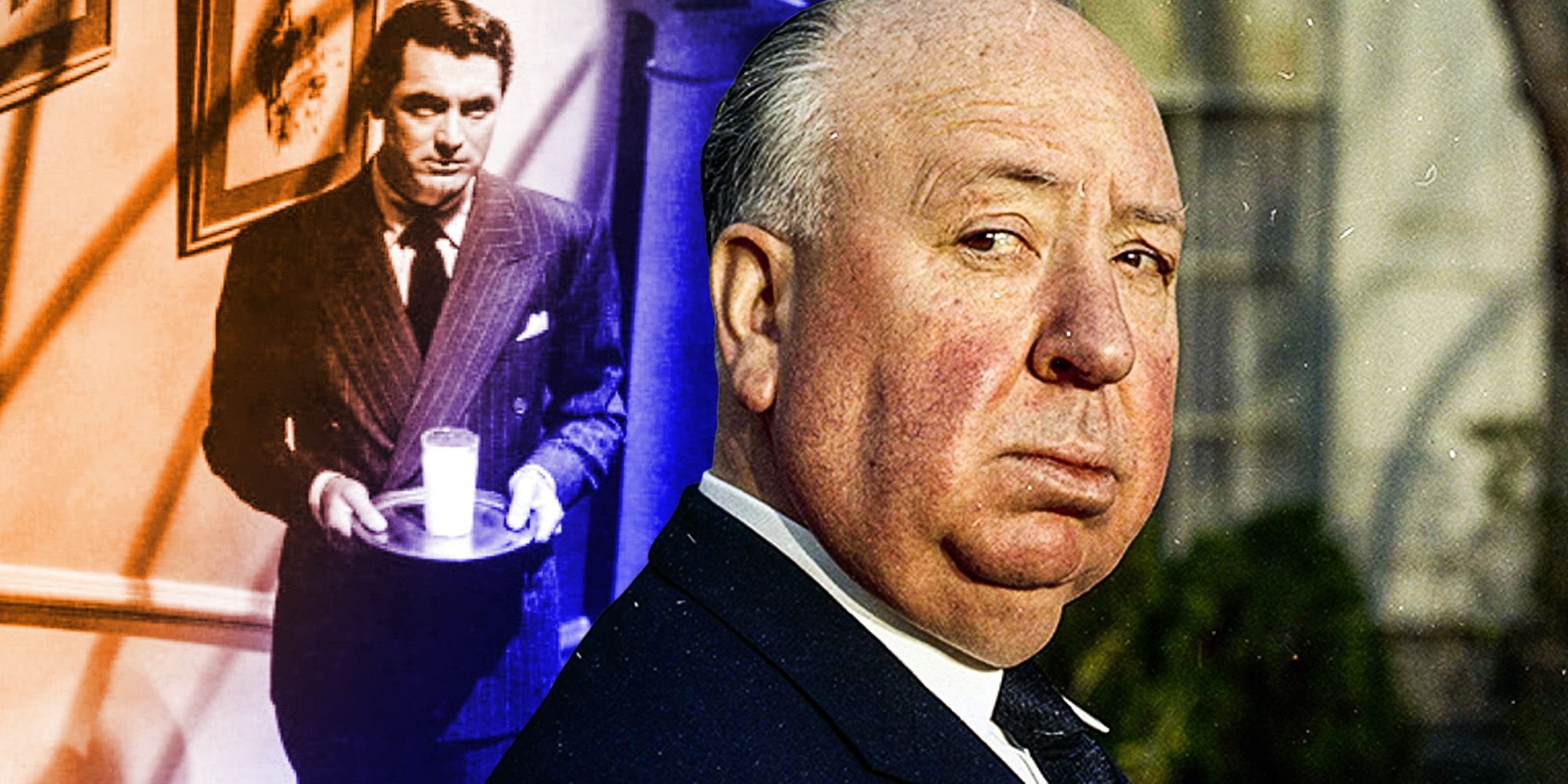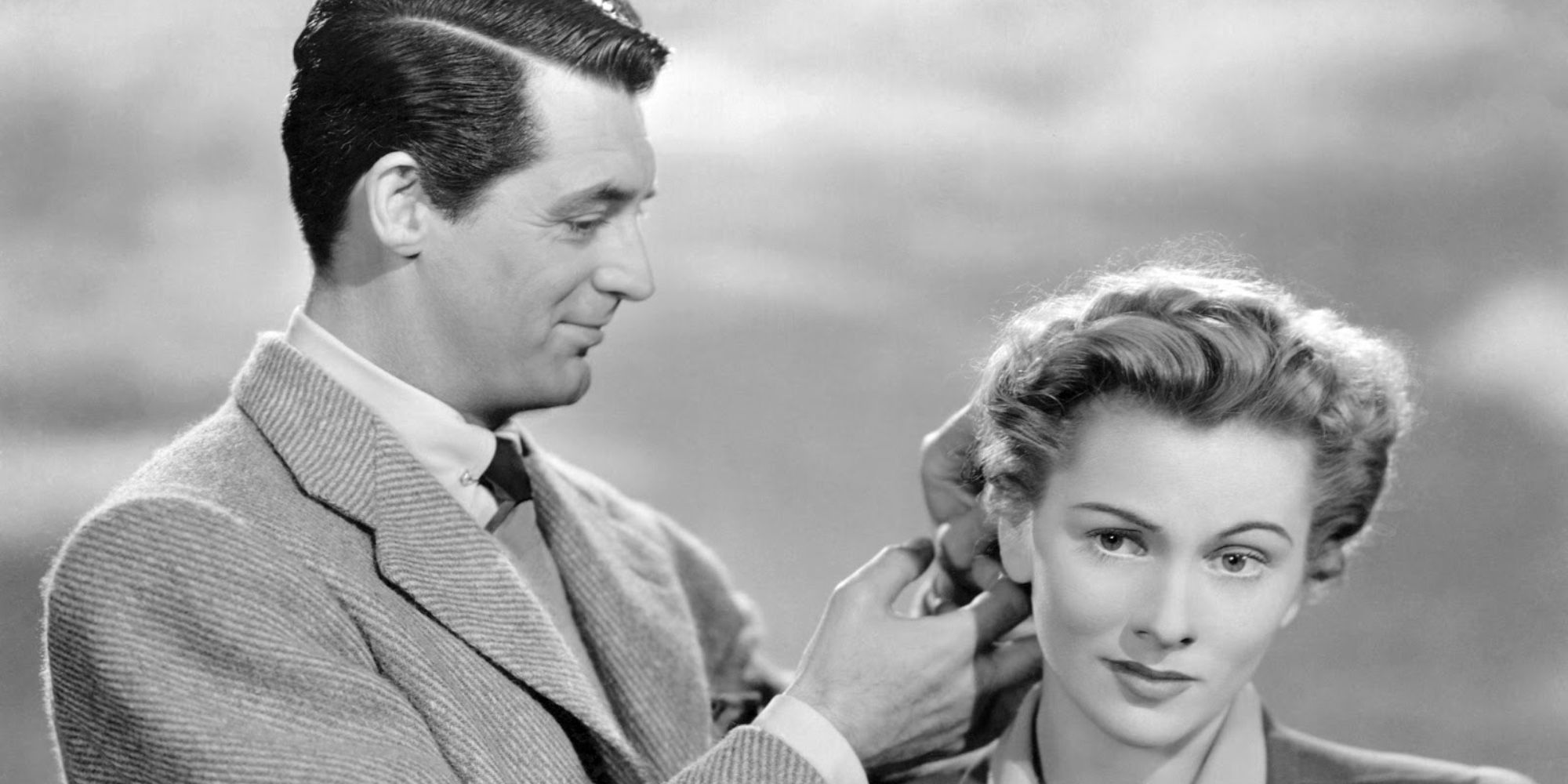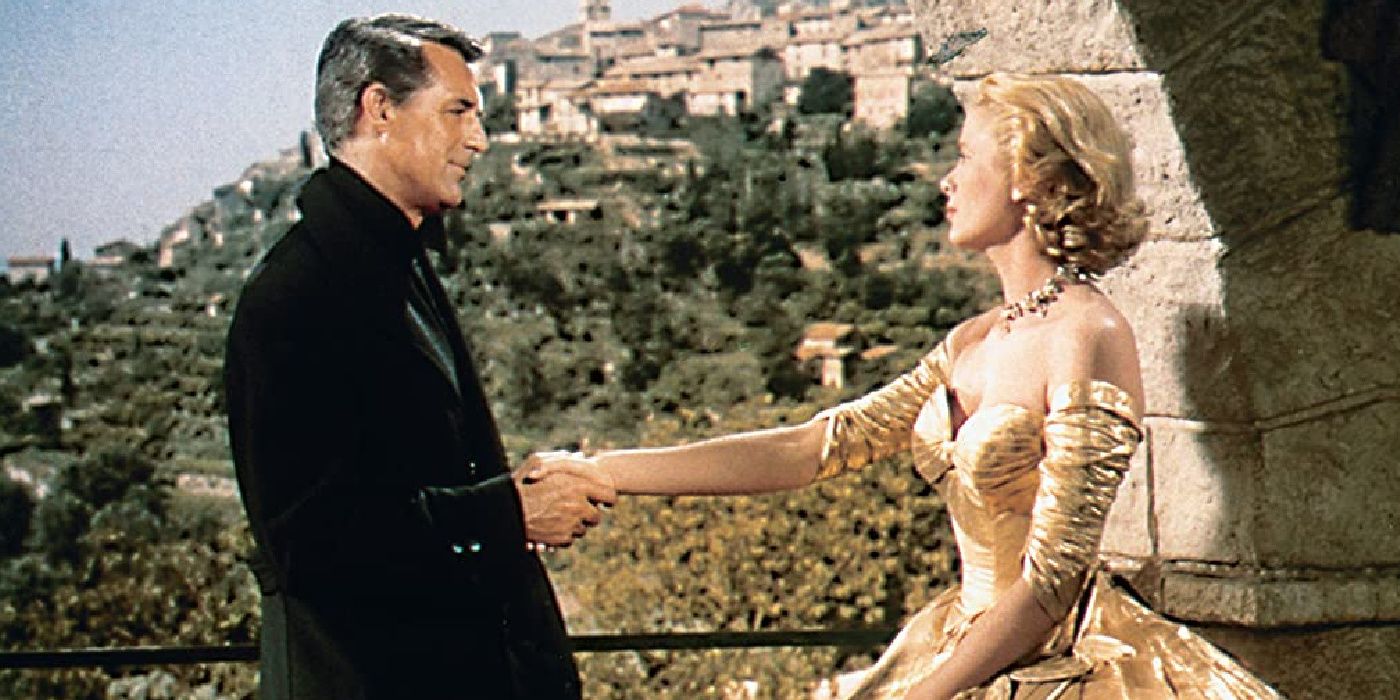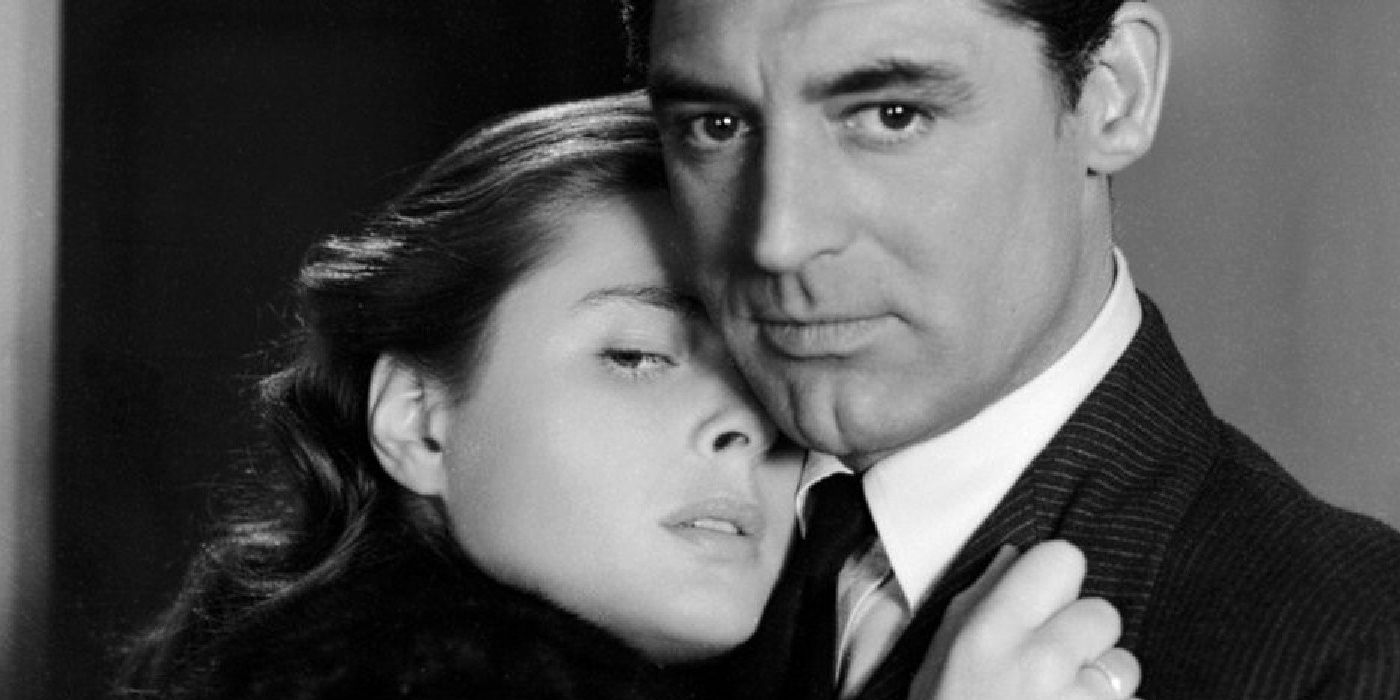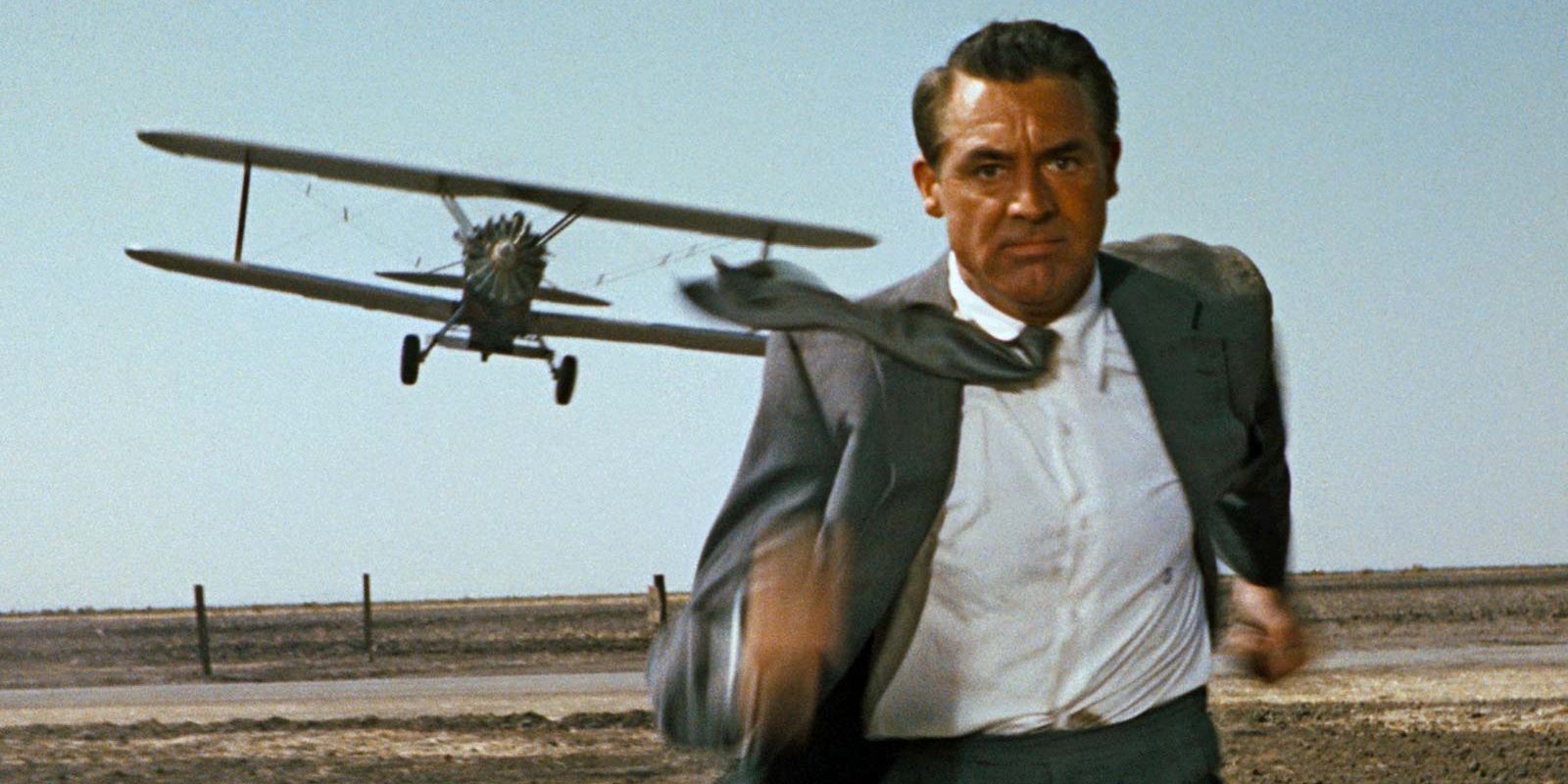Alfred Hitchcock and Cary Grant have collaborated multiple times to produce some of the best thrillers of all time, but how do the duo’s movies rank in quality and impact? The director and the leading man have left an indelible mark on Hollywood’s history, considering Cary Grant is one of the most prolific actors and personalities of the '40s and '50s while Hitchcock changed the landscape for horror, thriller, and suspense films. Though Grant and Hitchcock only made four movies together in the span of their long careers, each film made an intense impact on American culture after its release.
The British director Alfred Hitchcock began his legendary career in the late 1920s when he directed silent pictures, which laid the groundwork for his plot-twisting suspense-filled classics to come. The most notable thrillers from his 1930s British era are The 39 Steps and The Lady Vanishes, both of which use his common Macguffin tactic and involve spies or international enemies. As Hitchcock moved into American audiences, he captivated film culture with classics like Rear Window, Psycho, Vertigo, and his final Cary Grant collaboration North by Northwest.
Cary Grant may be best known for his debonair, charming manner, and ambiguous Transatlantic accent, but his comedic-timing and easy-going approach to his roles elevated him as one of Hollywood’s biggest stars. Grant’s career skyrocketed by co-starring in successful screwball comedies of the '40s like Bringing Up Baby, The Philadelphia Story, and His Girl Friday, and Hitchcock later tapped into Cary Grant's dominant Hollywood personality and dubious demeanor to lead thrillers on his own. While each film is influential and important to each man’s career and the mystery genre, here are Hitchcock and Grant's films ranked from worst to best.
Suspicion
Alfred Hitchcock’s psychological thriller Suspicion (1941) has a strong positive critical consensus but has fallen behind when considering the top rankings of his vast filmography. The movie explores inexperienced woman Lina Mclaidlaw (Joan Fontaine) as she finally agrees to marry playboy Johnnie Aysgarth (Cary Grant). As their marriage goes on, Lina learns of Johnnie’s habitual gambling, lying, and dangerous temper. At the time Lina is ready to leave him, her fear is escalated when she becomes suspicious that Johnnie has killed others and is planning to murder her.
Suspicion was Alfred Hitchock’s second consecutive film to be nominated for Best Picture at the Academy Awards but hasn’t had a lasting legacy like his other major American-era films. The film stars Cary Grant alongside Joan Fontaine, who won the Best Actress Oscar for her Suspicion performance and whose mental torture is the focus of the suspense. Suspicion is much less about Grant’s charming character and performance than it is about Fontaine’s paranoid character study; as a result, Grant gets overshadowed by his female co-star.
The screenplay is subpar when considering Hitchcock's dialogue-filled psychological thrillers like Rebecca and Notorious. Suspicion's bland script makes the characters' charisma and naivete less convincing. Grant wasn't able to shine in the central role that he excels in like To Catch a Thief or North by Northwest, though he does provide the necessary nuances for audiences to suspect him of the vile acts Fontaine's character fears.
To Catch a Thief
To Catch a Thief (1955) uses a core romantic plotline to uplift its suspense, but the film's spy-angle conflict focuses more on action and excitement. The charm of the two leads, Cary Grant after years as a top-billed leading man and Grace Kelly as Hollywood’s star future Princess, are the saving graces of the film. To Catch a Thief is a slight disappointment considering its suspense is sub-par compared to the stars' prior collaborations with Hitchock, but the charm of Grant and Kelly, the setting on the French Riviera, and the cinematography keep it locked in the category of classic Hitchcock.
To Catch a Thief tells the story of retired cat burglar John “The Cat” Robie (Grant) who, in an attempt to prove his innocence, must catch the imposter who is stealing from rich tourists in the French Riviera. John possesses a list of those in the Riviera who own the most expensive jewels and happens to fall in love with the first woman on the list: Francie Stevens (Kelly). The plot thickens when Francie’s mother’s jewelry is stolen, and she suspects John is the thief.
Hitchcock's films are notorious for his blond female romantic interests and aging yet charming leading men, and To Catch a Thief uses these devices to their fullest extent. While James Stewart perfected Hitchock’s suspicious, paranoid leading man, Grant exemplified his charming, precariously confident protagonist. The film is exciting for its colorful cinematography, extravagant French Riviera setting, and captivating leads, but they couldn’t save the unsatisfying unraveling of the mystery that doesn't hold up to Hitchcock's other work.
Notorious
Cary Grant is the James Bond that never was, and Notorious (1946) is where his spy-like charisma was cemented. Notorious stars Cary Grant opposite Ingrid Bergman and Claude Rains, essentially taking over Humphrey Bogart’s Casablanca role only a few years earlier. Just as Bergman’s character did in Casablanca, she must sacrifice her true love and happiness for the greater good, and just like Bogart, Grant must reluctantly push her into the arms of another. The caveat for Hitchcock's film is that the audience finally gets the satisfying romantic ending where the two whisk off from their troubles together.
Notorious documents U.S. agent T.R. Devlin (Grant) as he is instructed by the government to recruit Alicia Huberman (Bergman) to seduce the leader of a Nazi group, Alex Sebastian (Rains). Huberman’s father was a German war criminal, and Sebastian was habitually infatuated with her, so Devlin and the U.S. government use her to more intimately investigate the group. Further trouble arises when Sebastian discovers she is a spy, and to cover his own tracks, tries to slowly kill her. The screenplay, direction, and performances by the lead cast make Notorious the kind of classic Hitchcock psychological thriller audiences know and love. The chemistry between Bergman and Grant elevates the core conflict, and it's Notorious’ fundamental romantic aspect instead of the paranoid fear that makes it work.
North by Northwest
Possibly the greatest Cary Grant performance and Hitchock spy-thriller of all time, North by Northwest’s (1959) central performances and near-flawless storyline suspense is Hitchcock at his best. Not only is the suspense top-tier, but the settings like the French Riviera and California coast that uplifted Hitchcock's prior films are also overpowered by North by Northwest's plethora of recognizable scenery such as Mount Rushmore, Park Avenue, Plaza Hotel, and Grand Central Station. The film is also notable for perfecting the classic tropes of mistaken identity, double agents, and stopping the theft of government secrets. Grant had worked with Hitchcock three times prior in a similar manner, but North by Northwest fine-tuned every aspect and became the prototype for captivating, suspenseful spy thrillers.
North by Northwest chronicles Roger Thornhill (Grant), a New York City advertising executive who is mistaken by a group of spies as a U.S. government agent and is relentlessly pursued by Phillip Vandamm (James Mason) and his spy associates across America. As Thornhill attempts to escape his pursuers and board a train, he meets the mysterious Eve Kendall (Eva Marie Saint), who he later discovers is working with Vandamm. Several memorable action sequences follow, including North by Northwest's iconic scene where Cary Grant is suddenly chased in the middle of nowhere by enemies in a crop-duster plane. This builds up to the final action sequence where Roger and Eve are pursued by Vandamm's men down the faces of Mount Rushmore.
The spy thrillers and franchises that audiences know and love today such as James Bond, Kingsman, Bourne, and Mission Impossible are all influenced by the tropes and caveats introduced and made flawless by North by Northwest. While many of Hitchcock's films have a supernatural or horror-aspect that repels some faint-of-heart viewers, North by Northwest is pure entertainment for any type of audience member. Grant was able to use his comedic-timing reminiscent of his screwball-comedy days of Bringing Up Baby and His Girl Friday, and flawlessly combine it with his charming yet daring persona that Hitchcock hacked at with Notorious and To Catch a Thief. The twist and turns, captivating performance by suave Cary Grant, and suspense-filled Alfred Hitchcock touch make the film an entertaining thriller to be enjoyed by generations to come.

